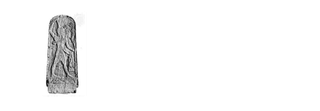Changes in the West Phoenician "pantheon" due to cultural contacts with Greeks and Etruscans and the dominance of Carthage (6th-4th cent. B.C.)

The aforementioned phenomena have yet to be sufficiently investigated in terms of historical evolution and sociological structures, so the project outlined here aims to bridge this gap. In addition to literary and numismatic materials, there is also a great deal of evidence from archaeological objects, which excavators and art historians have been studying for some time now . Nevertheless there are aspects of religious practice in the context of contacts with non-Phoenician cultures, which are lacking, as are sociological studies on the structures of cultural transfers. Four steps should be taken: first it is necessary to check previous relevant publications by Semitists / Orientalists, archaeologists and historians on questions of hellenization and cultural "amalgamation"; some of them will most certainly contain useful contributions for our special point of view. Second we shall look for source material â€" chiefly investigating the numismatic evidence from Carthage itself, Punic Sicily and Sardinia, which has not yet been used for research of this kind. Third all relevant data - from literary sources, from places of worship, graves and coins - will be systematically analyzed according to geographical and chronological criteria. In the fourth and final phase of research, it will be possible to check the main data and results again in terms of systematic and general sociological evidence.
The project aims to revise traditional research outcomes resulting from prejudices regarding the inferiority of Punic religious life and culture, to an unbiased insight into Phoenicians' own perception of themselves and of others, first and foremost of Greeks. At the same time the project aims to examine the dynamics of religious interferences from adaptation and separation resulting from contacts and conflicts between Phoenicians and Greeks and, where relevant, other non-Phoenicians in the West. The subject of this research is not part of the transfer of the great religious traditions during Antiquity, it does however seem to us to be an appropriate topic as a case study analyzing relevant mechanisms and potential which could also affect any other case of religious contact and transfer.

